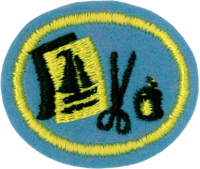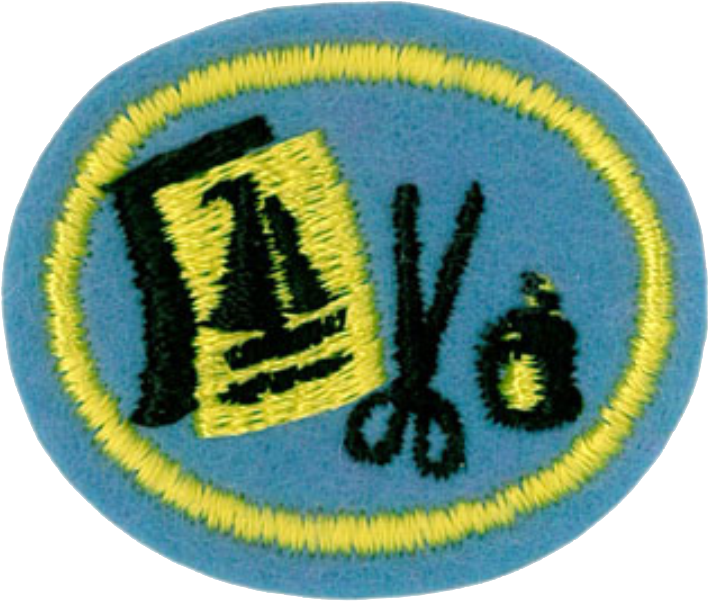Difference between revisions of "AY Honors/Felt Craft/Answer Key/es"
(Created page with "Especialidades JA/Trabajos en fieltro/Respuestas") |
(Created page with "</noinclude>") |
||
| Line 2: | Line 2: | ||
<section begin="Body" /> | <section begin="Body" /> | ||
{{ansreq|page={{#titleparts:{{PAGENAME}}|2|1}}|num=1}} | {{ansreq|page={{#titleparts:{{PAGENAME}}|2|1}}|num=1}} | ||
| − | <noinclude> | + | <noinclude></noinclude> |
| − | </noinclude> | + | <!-- 1. ¿De qué fibra se hace el fieltro? ¿Qué le da su resistencia a la tracción? --> |
| − | <!-- 1. | ||
| − | |||
| − | |||
| − | |||
| − | |||
| − | + | <noinclude></noinclude> | |
| − | <noinclude | ||
| − | |||
{{CloseReq}} <!-- 1 --> | {{CloseReq}} <!-- 1 --> | ||
{{ansreq|page={{#titleparts:{{PAGENAME}}|2|1}}|num=2}} | {{ansreq|page={{#titleparts:{{PAGENAME}}|2|1}}|num=2}} | ||
| − | <noinclude> | + | <noinclude></noinclude> |
| − | </noinclude> | + | <!-- 2. Hacer una lista de 15 usos de fieltro. --> |
| − | <!-- 2. | ||
| − | |||
| − | |||
| − | |||
| − | |||
| − | |||
| − | |||
| − | |||
| − | |||
| − | |||
| − | |||
| − | |||
| − | |||
| − | |||
| − | |||
| − | |||
| − | |||
| − | |||
| − | |||
| − | |||
| − | |||
| − | |||
| − | |||
| − | + | <noinclude></noinclude> | |
| − | <noinclude | ||
| − | |||
{{CloseReq}} <!-- 2 --> | {{CloseReq}} <!-- 2 --> | ||
{{ansreq|page={{#titleparts:{{PAGENAME}}|2|1}}|num=3}} | {{ansreq|page={{#titleparts:{{PAGENAME}}|2|1}}|num=3}} | ||
| − | <noinclude> | + | <noinclude></noinclude> |
| − | </noinclude> | + | <!-- 3. Dar tres razones por las cuales se considera un buen material para artesanías/manualidades. --> |
| − | <!-- 3. | ||
| − | |||
| − | |||
| − | |||
| − | |||
| − | |||
| − | |||
| − | |||
| − | |||
| − | + | <noinclude></noinclude> | |
| − | <noinclude | ||
| − | |||
{{CloseReq}} <!-- 3 --> | {{CloseReq}} <!-- 3 --> | ||
{{ansreq|page={{#titleparts:{{PAGENAME}}|2|1}}|num=4}} | {{ansreq|page={{#titleparts:{{PAGENAME}}|2|1}}|num=4}} | ||
| − | <noinclude> | + | <noinclude></noinclude> |
| − | </noinclude> | + | <!-- 4. Hacer una lista de los pasos esenciales en la fabricación de fieltro. --> |
| − | <!-- 4. | ||
| − | |||
| − | |||
| − | + | {{clear}} | |
| − | |||
| − | |||
| − | + | {{clear}} | |
| − | |||
| − | |||
| − | + | {{clear}} | |
| − | |||
| − | |||
| − | |||
| − | + | {{clear}} | |
| − | |||
| − | |||
| − | |||
| − | + | {{clear}} | |
| − | |||
| − | |||
| − | |||
| − | + | {{clear}} | |
| − | |||
| − | |||
| − | |||
| − | + | {{clear}} | |
| − | |||
| − | |||
| − | |||
| − | + | {{clear}} | |
| − | |||
| − | |||
| − | |||
| − | + | {{clear}} | |
| − | |||
| − | |||
| − | |||
| − | + | {{clear}} | |
| − | |||
| − | |||
| − | |||
| − | + | {{clear}} | |
| − | |||
| − | |||
| − | |||
| − | + | {{clear}} | |
| − | |||
| − | |||
| − | + | {{clear}} | |
| − | {{ | ||
| − | |||
| − | + | <noinclude></noinclude> | |
| − | <noinclude | ||
| − | |||
{{CloseReq}} <!-- 4 --> | {{CloseReq}} <!-- 4 --> | ||
{{ansreq|page={{#titleparts:{{PAGENAME}}|2|1}}|num=5}} | {{ansreq|page={{#titleparts:{{PAGENAME}}|2|1}}|num=5}} | ||
| − | <noinclude> | + | <noinclude></noinclude> |
| − | </noinclude> | + | <!-- 5. Hacer dos de los siguientes artículos, utilizando al menos dos colores diferentes de fieltro: --> |
| − | <!-- 5. | + | <noinclude></noinclude> |
| − | <noinclude | ||
| − | |||
{{ansreq|page={{#titleparts:{{PAGENAME}}|2|1}}|num=5a}} | {{ansreq|page={{#titleparts:{{PAGENAME}}|2|1}}|num=5a}} | ||
| − | <noinclude> | + | <noinclude></noinclude> |
| − | </noinclude | ||
| − | |||
<div lang="en" dir="ltr" class="mw-content-ltr"> | <div lang="en" dir="ltr" class="mw-content-ltr"> | ||
Revision as of 00:38, 27 April 2021
Nivel de destreza
1
Año
1956
Version
22.12.2025
Autoridad de aprobación
Asociación General
1
2
3
4
5
5a
This video shows how to make a pennant. A cover for a scrapbook is a very similar project.
5b
There are lots of cute, fun, and interesting bookmarks you can make. Again, YouTube is your friend.
Ladybug Bookmark
- Materials: Red felt, black felt, two googlie eyes, thin black pipe clears, scrap cardboard (cereal box or pasta box weight), fabric glue, white glue, black marker
- Cut cardboard to width and length desired
- Wrap the cardboard in black felt. Glue on with white glue
- Cut red felt into a oval shape for the lady bug body
- Punch out or cut out 6 black spots
- With fabric glue attach the spots (or sew on)
- Add 6 legs (3 sets) with thin pipe cleaners on top of the black bookmark base and under the ladybug body
- With fabric glue (or sew) the lady bug body to the black felt bookmark, leaving a black square for the head area showing
- Trim the square top into the rounded head of the ladybug
- Mark the wings on with the black marker
- Set aside so the glue can dry
5c
Similar idea to the bookmark, but glue on a magnet instead.
5d
Directions for a heart shaped needle case. Remember to use two colors of felt.
5e
Here are some cute felt finger puppets (2 to 4 colors). There is a link to printable patterns from the page. These are similar in size and complexity to bookmarks and magnets.
What else can we say - go crazy with felt!
6
6a
This could be a nature or Biblical theme, or maybe felt the Pathfinder flag. You might also attach your mural to a notebook or photo album cover. Let your imagination go free and have fun.
6b
Here are some holiday presents from felt, felt ordainments and felt Christmas trees. These are just examples, so look around YouTube for ideas. Be sure to use four colors of felt as per the requirements.
6c
A good tutorial on making a felt hand puppet and directions for:
- Felt Monkey (included template works for Parrot and Zebra or your creation)
- Felt Parrot
- Felt Zebra
Here is a much simpler hand puppet.
Making a puppet is also Requirement #1 of the Puppetry honor so consider tackling both honors together.
6d
After the ladies talks, she does show how to make some stockings for kitchen utensils. You could easily decorate these to include enough colors.
A cute little hot chocolate cup out of felt. Don't use it for actual hot chocolate though.
7
7a
Here are some stuffed animals (or puppets if you prefer)
7b
Some cute baby decoration stuffed animal toys from felt. Good beginner project.
7c
Here is a video on making a bag with felt.
7d
A simple way to make a felt beanbag that looks cool is to take 6 large squares of 6 different bright colors of felt and stitch them together into a cube. Build it inside out, stitching on a sewing machine until you are near the end. Than turn it right side out, fill with beans, rice, or lentils and hand stitch it closed.
Here is another take on felt bean bags.


